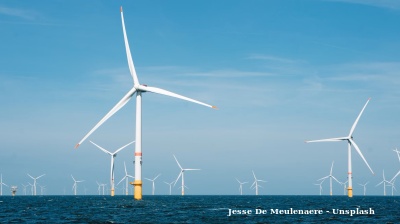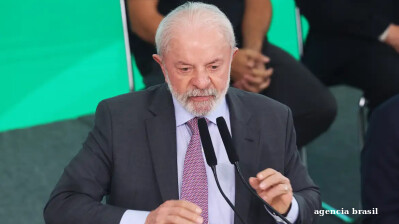In 2024, Brazil is waking up to the reality of climate change as it deals with wildfires up and down the country. A severe drought in the Amazon region, where water is crucial to livelihoods, is also causing alarm as water levels in the eponymous river drop dangerously low.
This is happening in Latin America's largest nation, known for its predominantly tropical climate. Here, heat and sun are typically complemented by recurrent, often torrential, rain, which contributes to Brazil's renowned lush greenery. Yellow and green are the colours of its own flag.
But the climate crisis is upending that belief as well. This week, President Luiz Inacio Lula da Silva announced several measures to combat the severe drought and raging fires in the Amazon region as his government faces increasing pressure to address what the Supreme Court has termed a "fire pandemic", AFP reported.
Lula visited the northern state of Amazonas, where riverside communities are grappling with the worst drought in 70 years, accompanied by several ministers.
Among other measures to alleviate the crisis, the government said it will speed up dredging works on the Amazon River and other waterways to improve navigation, and intends to deliver water purifiers to affected communities as well as the creation of a new authority to tackle "extreme climate” risks.
"We take the need to combat drought, deforestation and fires, very seriously," Lula said during his visit.
The drought, which many experts link to human-caused climate change, has dried up rivers crucial for isolated communities' navigation, food, and water supply.
Local leader Myrian Tikuna was quoted by The Associated Press as saying that the once-mighty Amazon River was now "resembling a desert," starkly illustrating the crisis.
Environment Minister Marina Silva pointed out the increasing frequency and intensity of such extreme climate events, underscoring the need for adaptation strategies.
The crisis extends beyond the Amazon and to almost all economic sectors. São Paulo, Latin America's largest city, was ranked as the world's most polluted major metropolis for the second consecutive day on September 10, according to air quality monitoring company IQAir.
Brazil, which hosts the largest section of the Amazon rainforest at around 60%, currently accounts for 76% of the areas affected by fires in South America, with more than 5,000 active fire outbreaks reported on September 10. But other countries in the region are not spared, either. Last week, Bolivia declared a national emergency over wildfires that destroyed more than 3.8mn hectares of forests and grasslands nationwide, while Argentina and Chile faced severe blazes earlier this year.
Official figures indicate that approximately 6.7mn hectares of the Brazilian Amazon have burned so far this year, equivalent to 1.6% of the rainforest.
The situation is particularly dire in the Pantanal, a biodiversity-rich wetland sanctuary threatened by the spreading fires. The Supreme Court's order for immediate government action highlights the urgency of the crisis.
Estadao reported how the wildfires are also affecting several federal preservation areas and state parks, some of which have been forced to close in September, according to reports from environmental authorities.
The Brazilian Chico Mendes Institute for Biodiversity Conservation (ICMBio) announced the closure of major attractions in the Chapada dos Guimarães National Park, near Cuiabá in Mato Grosso state. The affected sites include Morro São Jerônimo, Véu de Noiva, Circuito das Cachoeiras, Cachoeirinha, and Cachoeira dos Namorados.
Further closures have been implemented in other regions. The Brasília National Forest remains inaccessible as of September 9. In São Paulo state, the Araçoiaba hill route in the Ipanema National Forest, located 120 km from São Paulo city, has also been closed to visitors.
The country's strong agricultural sector has also been affected, Valor reported. Scorching temperatures and severe drought are fuelling a surge of wildfires across Brazil's forest and agricultural regions, with coffee plantations among the latest casualties.
Brazil's National Institute for Space Research (INPE) reported 8,225 fire hotspots detected nationwide in just two days of early September, according to its Burn Program.
The crisis has now struck the heart of Brazil's coffee industry. Fazenda Nossa Senhora Aparecida, a coffee plantation owned by O'Coffee - a family business of former Governor Orestes Quércia - has been engulfed by flames. The farm, located in Pedregulho in the Alta Mogiana Paulista region, is surrounded by sugarcane plantations which have also fallen victim to the fires.
Romildo Batista de Freitas, Pedregulho's security secretary and head of Civil Defense, told Valor that the fire had ravaged forests, sugarcane fields, and pastures before spreading to the coffee farm. The blaze has consumed a large area and blocked the highway connecting Pedregulho to Buritizal.
The scale of destruction in the Pedregulho region is staggering. Since mid-August, approximately 5,000 hectares have been impacted by fires, according to local Civil Defense.
"The heat, dry vegetation, low humidity, and wind are fueling the fires here. We've had many fires in previous years, but none with this intensity," said Freitas.
bneGREEN

Malaysia–Vietnam offshore wind project to deliver 2,000 MW by 2034, strengthening regional green energy links
Malaysia’s upcoming offshore wind project connecting Vietnam to Peninsular Malaysia is expected to generate up to 2,000 megawatts (MW) of clean energy by 2034, marking a major step in the nation’s renewable energy expansion

EBRD invests €16.8mn in Croatia’s first large-scale battery storage and virtual power plant
Development bank to take its first equity stake in a standalone merchant storage project.

Kyrgyzstan says neighbours “upset” by country’s lack of water
“This year we were supposed to overcome shortages, but instead, they have intensified,” deputy head of cabinet tells Uzbekistan and Kazakhstan.

EXPLAINER: What is the EU’s CBAM and how will it affect global trade from 2026?
The European Union’s Carbon Border Adjustment Mechanism (CBAM) will enter its full operational phase on January 1, 2026, marking a major shift in global climate and trade policy.

.jpg)


_1761147529.jpeg)